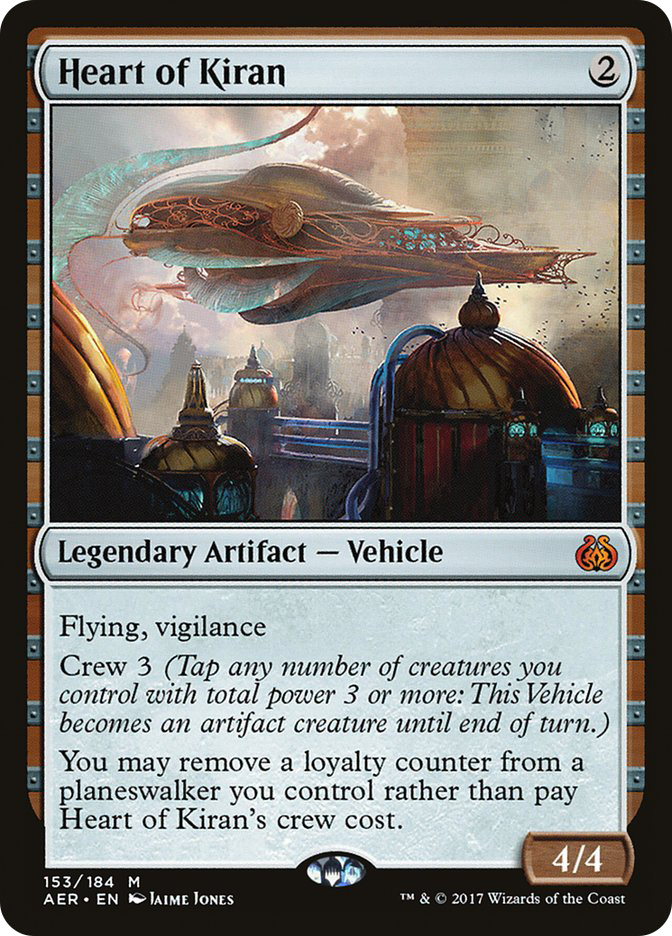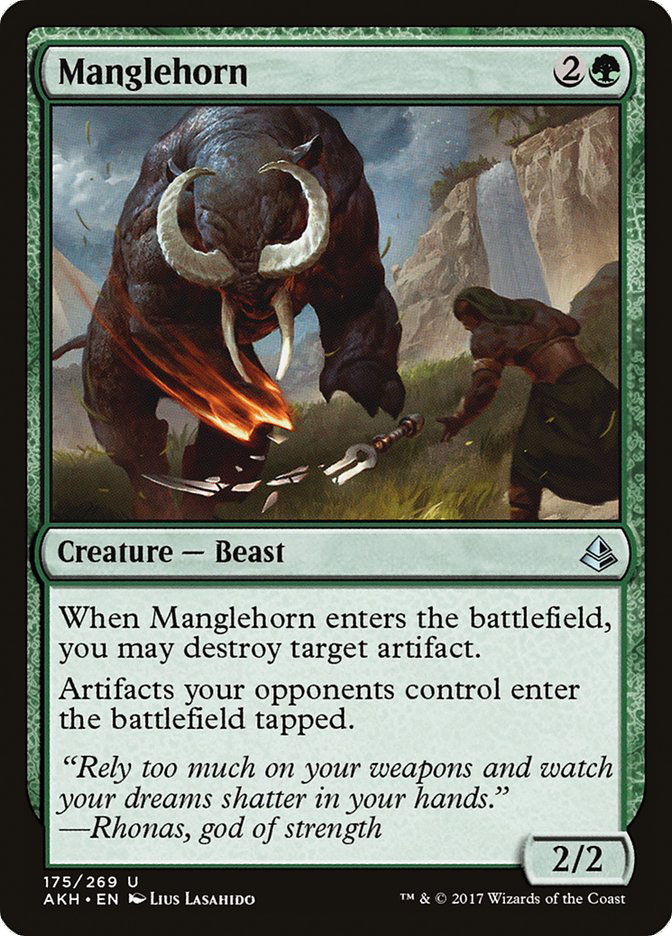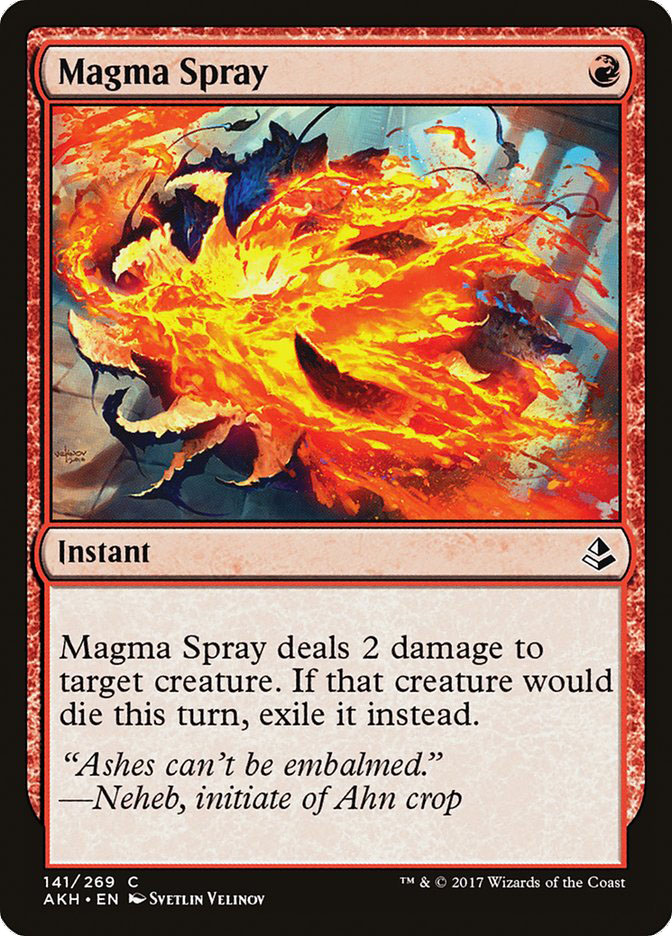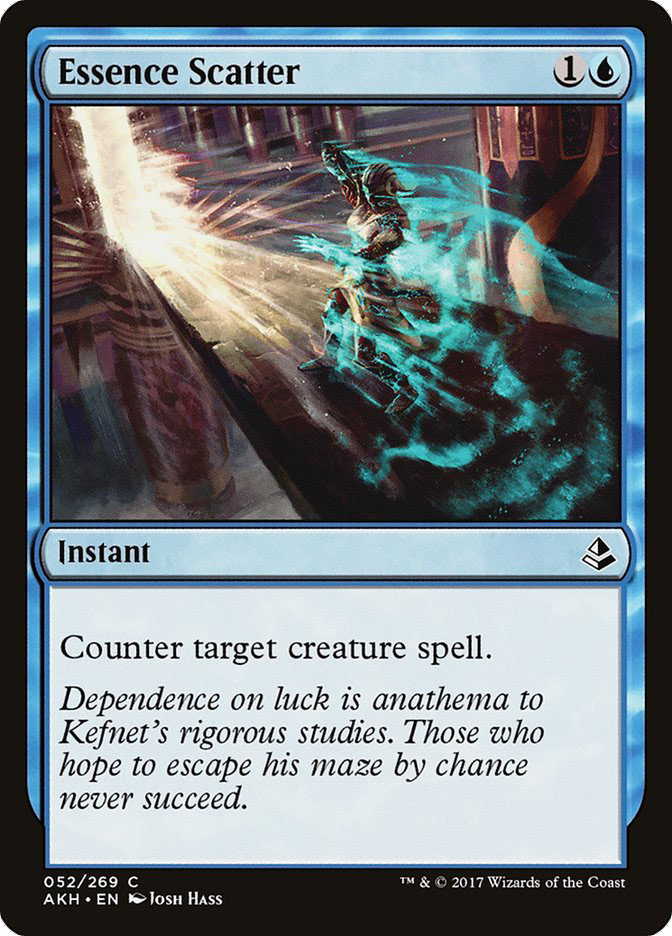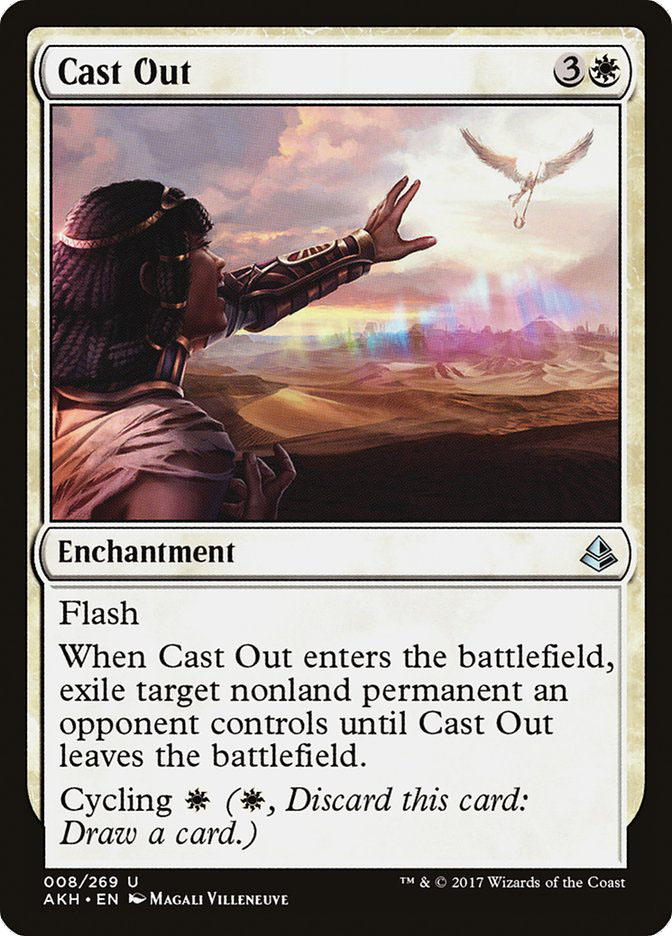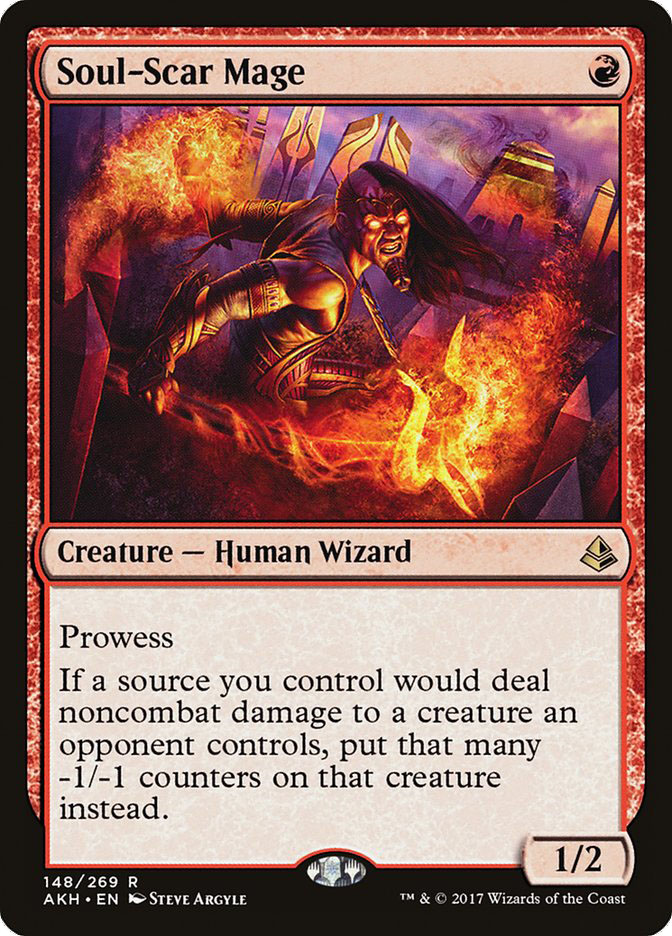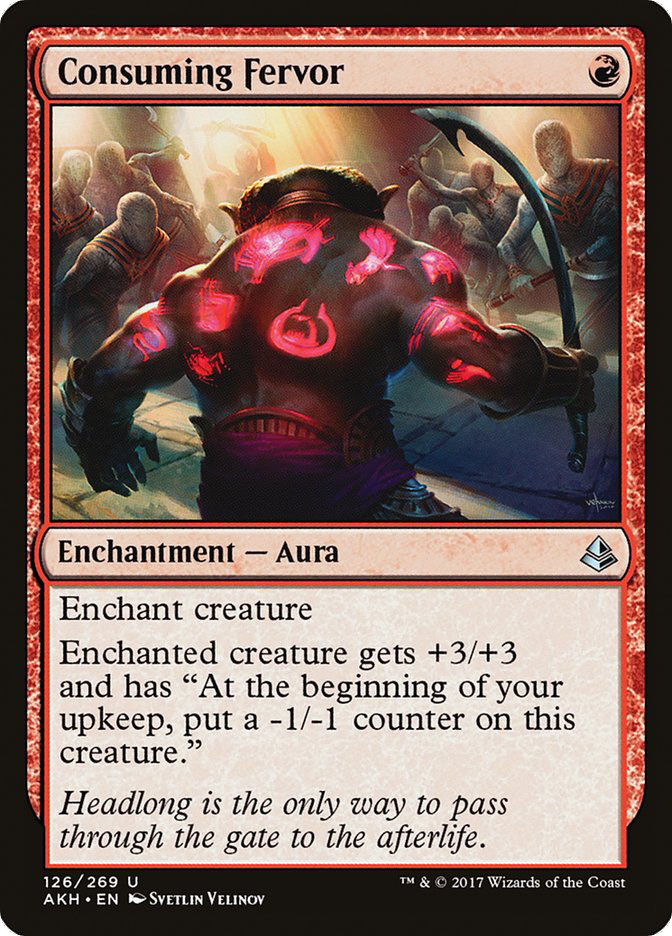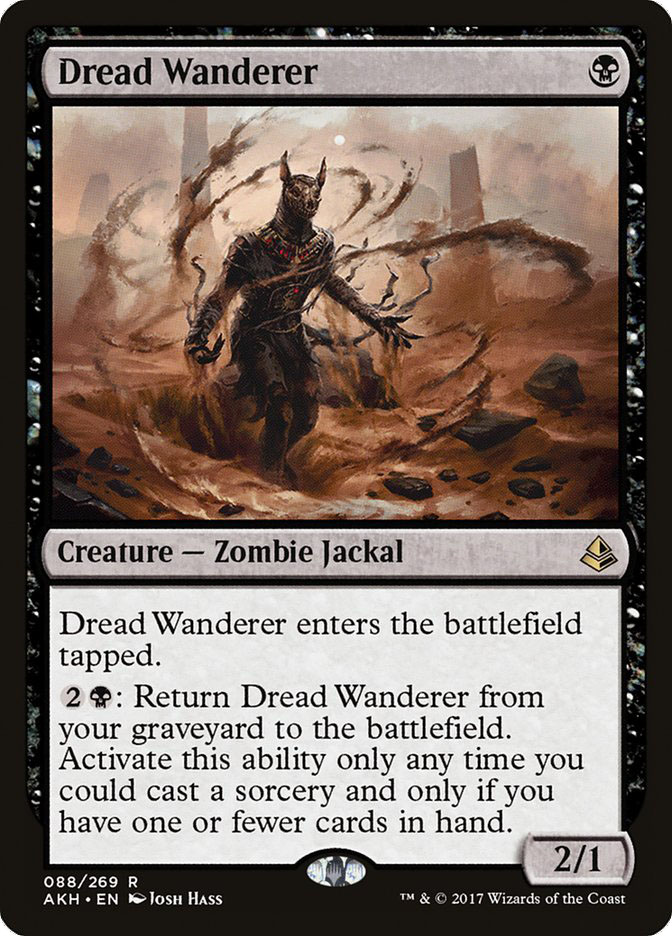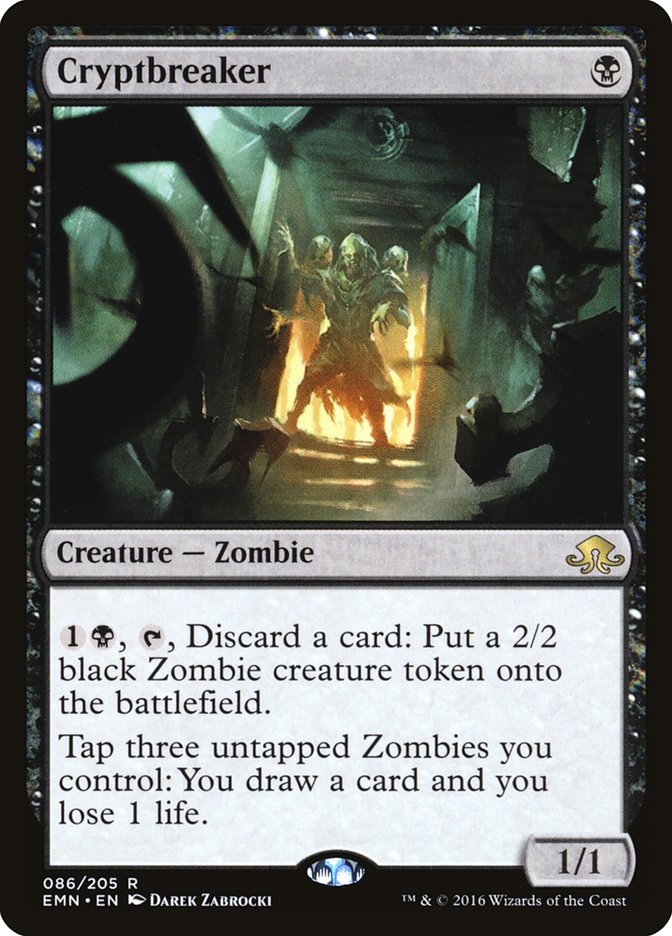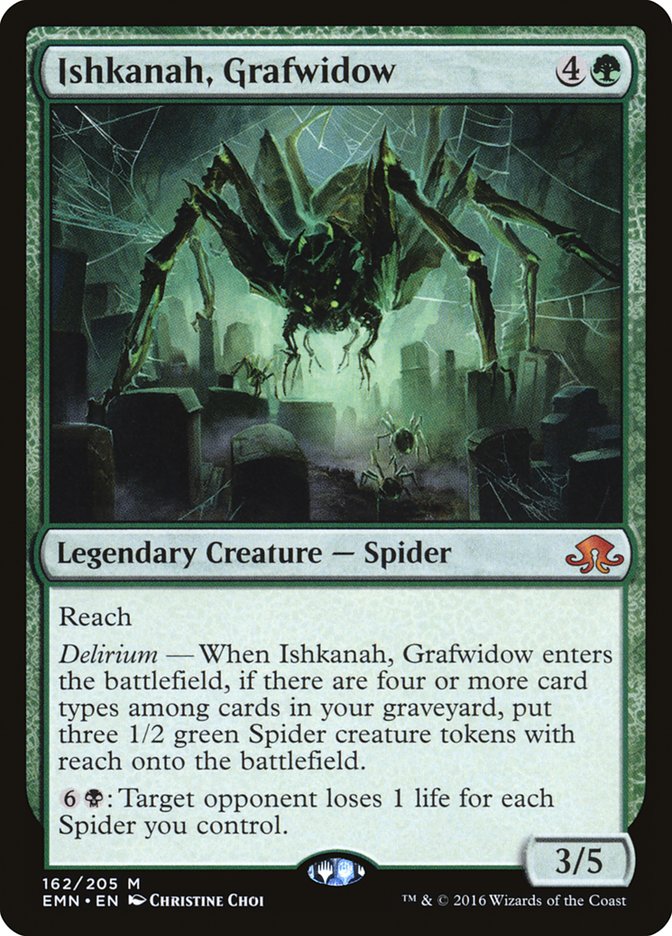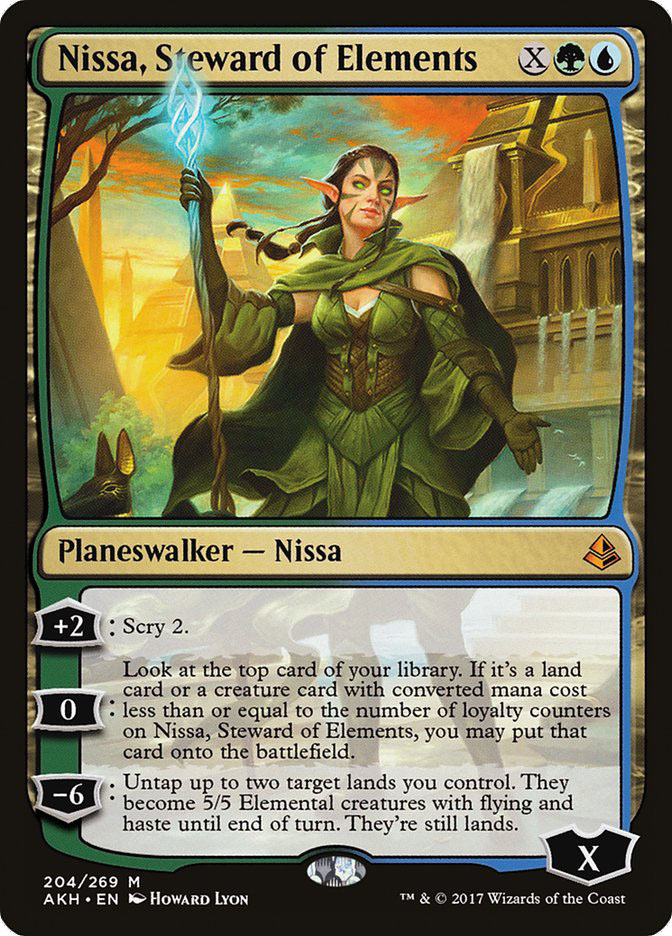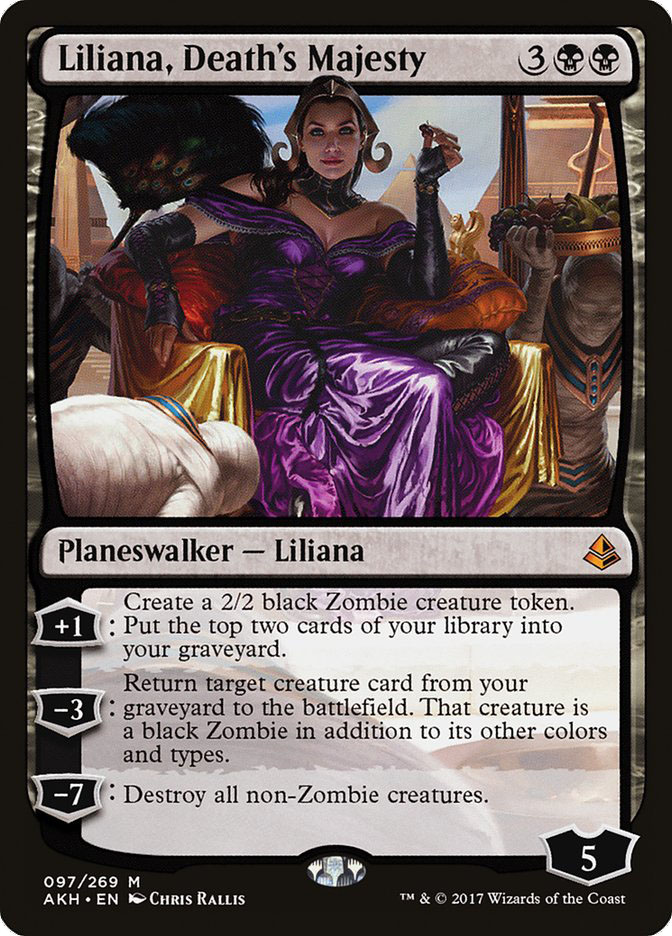Going into preview seasons for a large set with a large, firmly established Standard format in which nothing is rotating is a strange experience. We have many new cards, so Standard could be completely different. On the other hand, every deck that exists now can still exist, and the best decks are so powerful, how can we know that the new cards can compete? Yes, cycling for one mana is great, but do you really have time to spend any mana cycling if your opponent is going to open with Inventor’s Apprentice into Heart of Kiran?
There are some extremely powerful cards in Amonkhet, but there are lots of powerful cards in Standard already that can’t keep up with the best decks. The burden of proof will certainly be on any new strategy. The result is that it makes sense to start with cards that clearly disrupt the status quo, cards that fit into existing decks that change how they play against other existing decks.
Patrick Chapin did a great job highlighting Manglehorn as a card that fits incredibly well into both B/G and Four-Color Saheeli shells and lines up fantastically against almost every current strategy.
Unless Amonkhet leads to some highly successful strategies without artifacts, I think the maindeck will be the default place for Manglehorn. I’ve already liked Release the Gremlins in the maindeck, as it has at least some targets against basically everyone. It’s at its worst against Saheeli, but the secondary text ensures that Manglehorn is still a good card in that matchup, and the drawback compared to Release the Gremlins isn’t actually that big; yes, Release the Gremlins is often cast for five or seven mana, and it’s totally game-breaking, but the question is how many of those times you need the additional power compared to when it’s just extra flourish and Manglehorn would have gotten it done. The difference is certainly appreciable, as a five-mana and three-mana Release the Gremlins are worlds apart, but Manglehorn is often going to be good enough, especially once you start blinking or reanimating it against people who rely on artifacts.
So, rather than highlighting flashy build-around cards, there are two major questions I’m looking for: first, which single cards can reverse existing matchups, and second, broadly speaking, how is the set pushing the direction of the format?
Single-Card Highlights
It could be argued that Scrapheap Scrounger has been the most successful card in Standard. It doesn’t get the attention of something like Gideon, Ally of Zendikar, but people find ways to put black mana into almost every aggressive deck so that they can use Scrapheap Scrounger, and it’s also a key component of certain dedicated strategies like Prized Amalgam. The recursion ability has singlehandedly forced my teammates and me to dismiss entire strategies like U/B Control that just didn’t have good enough answers to it.
Magma Spray is the perfect answer: simple, straightforward, cheap, and effective. Saheeli Rai tempts us to play Shock instead, and Winding Constrictor hints toward Fatal Push or a two-mana answer, but Magma Spray is the tool control decks needed to answer Scrapheap Scrounger while keeping up with Toolcraft Exemplar. Mardu Vehicles is still one of the hardest aggro decks for a control deck to answer that has ever existed because its threats come in so many different forms that each require different kinds of answers (cheap creatures, recursive creatures, Vehicles, and planeswalkers each create a different kind of pressure), but Magma Spray is a critical first step that could allow someone to build a Grixis Control deck, or, perhaps more threateningly, allow Jeskai Saheeli to compete with Mardu Vehicles, the deck that pushed it out of the format.
With threats taking the form of Vehicles and planeswalkers, this card may be at its worst, but our two-mana counterspells, Horribly Awry and Revolutionary Rebuff, are so narrow and weak that replacing them with Essence Scatter and Censor could breathe new life into control. It’s particularly noteworthy that nothing in Standard can counter a Gearhulk for two mana (depending on how you count Metallic Rebuke) prior to Amonkhet, and now there will be two cards that can. This is primarily important only for Torrential Gearhulk mirrors, but it’s a big deal there.
Where do you use this card, or maybe more importantly, where don’t you use this card, and what impact does it have on the metagame? The opportunity cost of putting this in a deck with white mana seems low, and there are a lot of times where you’d find yourself wanting to answer any nonland permanent. Will every white deck play four of these?
If you play this in a mono-white aggressive deck with twenty to 22 lands, you definitely don’t want to spend a mana on turns 1-3 cycling it, as a single mana is a huge deal in that kind of deck. On the other hand, versatile removal is the perfect top-end for that kind of strategy, especially if you don’t have to worry about it being stranded when you just want threats, and it’s also nice to have something to do with four mana, yet extremely valuable to be able to get rid of it when you’re stuck on two lands. Personally, if I were building Mono-White Humans, I’d start with two to three Cast Out and three to four other removal spells, but I’d be trying to figure out how I wanted to change that number as a top priority.
If your deck is anything slower than that, Cast Out only gets better, as it’s easier to find a spare white mana if you want to cycle it, but what about Mardu Vehicles? You don’t have that much more mana. Sometimes you’re constrained on white mana specifically, and you’re just as interested in curving out for the first three to four turns, but on top of that, you already have such incredibly good removal. How many more answers can you really play? Because Mardu Vehicles has so many great options, I wouldn’t expect to want more than one Cast Out in the maindeck.
Once we start looking at slightly slower decks with slightly worse options, like U/W Flash, W/G Humans, or Jeskai Control, now I’m starting to think about playing four copies of Cast Out. Is this the Hero’s Downfall we’ve been looking for?
If this card is widely played, how does that shape the rest of the format? Important cards that had types that were hard to answer, like Aetherworks Marvel, Dynavolt Tower, Always Watching, and planeswalkers, can now commonly be removed by maindeck cards, which makes it harder to rely on them as a core strategy, but in general, removal is only great when it answers threats that cost as much mana as the removal spell or more and, ideally, don’t leave too much value behind.
How many threats are there that cost more than four and don’t leave value behind? Sometimes Archangel Avacyn; Glorybringer if you have mana up on your opponent’s turn; even Skysovereign, Consul Flagship is considerably worse with this card in the format. But that’s not too many cards.
The strength of this card is its flexibility, not its rate, which fortunately means that cards won’t often just be embarrassed by this card like Hero of Bladehold against Jace, the Mind Sculptor, but in general, this kind of effect being widely played is going to discourage every expensive threat that doesn’t have an immediate impact. Chandra, Torch of Defiance; Verdurous Gearhulk; and even three-mana threats like Depala, Pilot Exemplar or Thalia, Heretic Cathar are more likely to take a back seat to cheaper threats or cards like Pia Nalaar that line up a little better against removal.
Big Picture, New Archetypes
I focused on answers above because those are the easiest cards to slot into existing decks, while threats are more likely to create new decks. Also, the answers are the cards that can line up specifically well against existing cards, while threats are harder to figure out because it’s a matter of determining the positioning of the new decks they allow against existing decks. The focus on answers above may lead one to believe that the format will be slowing down, but that’s rarely how adding a set to an existing format actually works. There are exceptions, but in general, the more cards are legal, the faster a format will be.
At first glance, this set includes tools to round out a variety of aggro decks. We don’t know that they can compete with Winding Constrictor or Mardu Vehicles as the best aggro decks yet, but Red might finally have enough aggressive cards to allow a Mono-Red Aggro deck to at least become a consideration again with the addition of Soul-Scar Mage, Flameblade Adept, Cartouche of Zeal, and Consuming Fervor. That’s a lot of playable one-mana aggressive red cards!
Similarly, Zombies might finally have enough support to let it play as a tribal aggro deck rather than just a weird madness/graveyard strategy, as Dread Wanderer was definitely the exact kind of support Cryptbreaker was looking for, and it can splash Embalm creatures of another color for additional support, either using green for Honored Hydra or white or something like Sacred Cat, which may be low-impact but can make it very easy to get to three cheap Zombies with Cryptbreaker.
When looking for tribal support, Humans is always one of the first to look for. Glory-Bound Initiate is the only real standout, but it plays so well with Always Watching that it could easily reinvigorate Humans.
I still wouldn’t expect any of those decks to really hold up to Mardu Vehicles, though. That deck just has too many things going for it unless Manglehorn creates strong enough pressure to build decks without artifacts.
I think another key piece of understanding this set is going to be figuring out what cycling does to the format. It’s weird to have so much power in the format attributed to flexibility rather than rate; it means that cards that aren’t quite as good to cast can still be good enough to play, and decks are a little slower on average, because sometimes they have to devote mana to cycling through cards they don’t want. I think that’s a great direction for Magic, but we need to see if the format actually allows anyone to do that.
If we can get away with playing cycling cards, delirium gets a lot better (related: Ishkanah, Grafwidow might be a big part of why we’re allowed to get away with playing cycling cards because it’s so good against the decks that try to punish you, and cycling potentially makes it much more reliable). If cycling becomes a big part of the format, rather than something few decks have access to a little of, it potentially slows the format down into a midrange slugfest, which can easily reward going bigger. This could mean setting up Saheeli Combo, it could mean having more counterspells and card draw, or it could mean having more high-impact planeswalkers like Liliana, Death’s Majesty or Nissa, Steward of Elements (who looks awesome in Four-Color Saheeli, incidentally).
My First Predictions
Manglehorn and Magma Spray are likely just enough to weaken Mardu Vehicles to the point where B/G is considerably favored in the match, the way they were before people figured out how to build better Mardu decks, and may also favor Four-Color Saheeli over Mardu.
Mardu Vehicles remains competitive, but not dominant the way it had been.
Four-Color Saheeli may become the deck to beat, particularly if Nissa, Steward of Elements is as great as I think it might be.
It also may incorporate a larger Traverse the Ulvenwald package with cycling and Ishkanah, Grafwidow that also makes the combo more consistent. This may replace the energy subtheme. Heaven//Earth is an interesting delirium enabler.
Four-Color Saheeli as the deck to beat invites Jeskai Saheeli and other Torrential Gearhulk Control decks as the best answer, which is what keeps Mardu Vehicles competitive as an answer to them.
Abzan Delirium using Cast Out to fuel Traverse the Ulvenwald and Ishkanah, Grafwidow may emerge as a contender, likely with Liliana, Death’s Majesty, but I’m not sure how it lines up in the format. The other major new player is likely U/B/X Control with cycling cards, Torrential Gearhulk, and Liliana, Death’s Majesty. This could also be a Traverse the Ulvenwald deck.
The bottom line? Even without bannings, I think we’ve seen enough to expect the format to shake up considerably, and, as always, there’s at least enough to test to keep the first couple of months interesting. Additionally, the designs of the major mechanics like cycling, Aftermath cards, and even the Gods and planeswalkers all push toward slowing the format down and shifting power to flexibility and late-game payoffs over synergy and maximizing rate, which is what Standard needs. This set looks like it could be one of those exceptions where adding cards really does slow the format down, which is a change I’d love to see.



